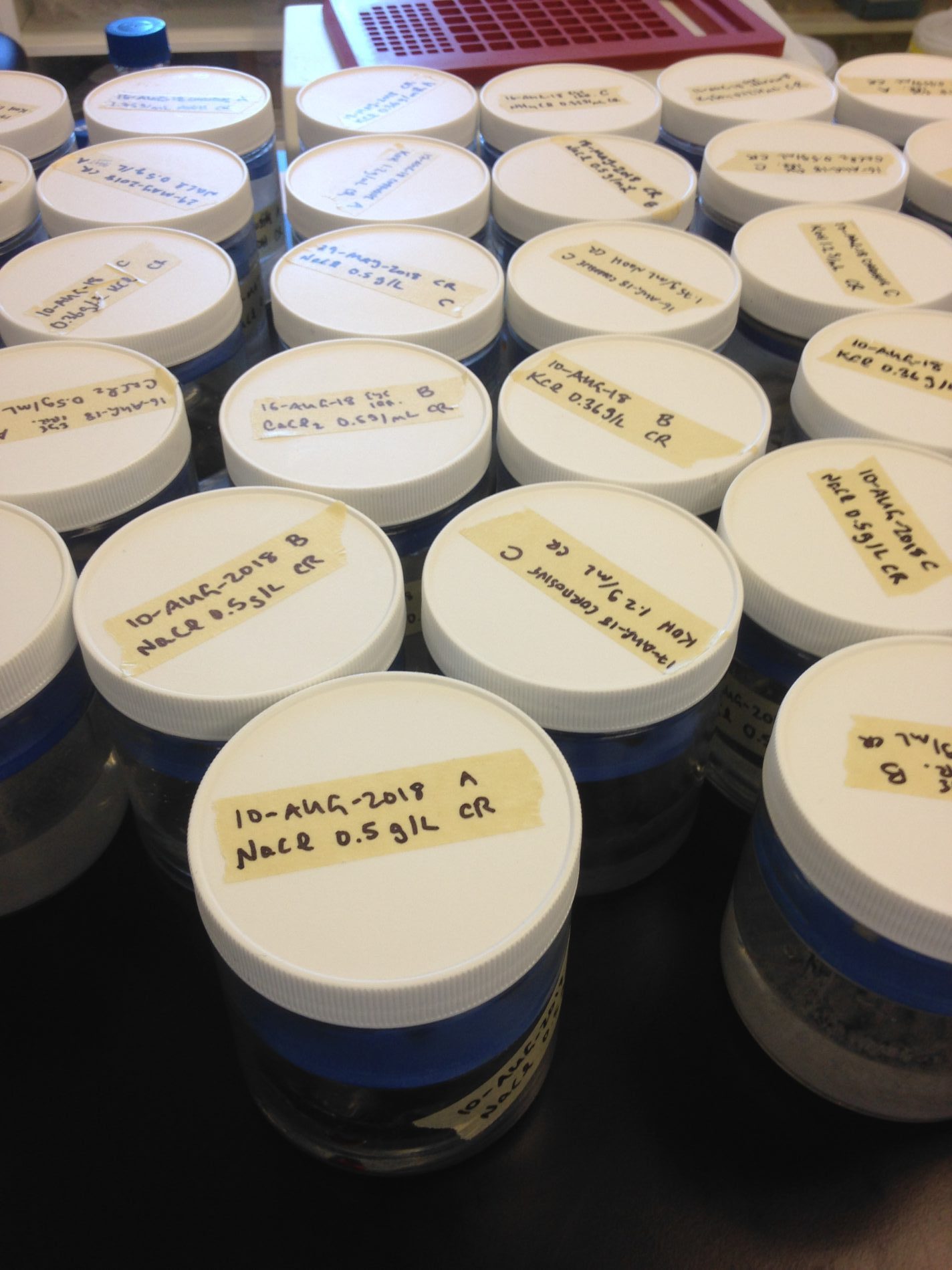Shaping the future: Our strategy for research and innovation in humanitarian response.

Shaping the future: Our strategy for research and innovation in humanitarian response.


The biggest “aha!” moment I’ve had during my master’s research is: poop is mostly water. The moisture content of fresh faeces can range from 63 to 86% — and faecal sludge can be more than 95% water! Even though we know that poop is mostly water, we don’t know much about how water is physically distributed within faeces and faecal sludge. Within a solid matrix – like food or poop – water can be found on the surface of the material, within the capillaries of the material, or bound within the matrix. Where the water is physically distributed will impact the physical, chemical, and biological characteristics of the matrix.
For example, it determines how much energy is required to remove the water and whether pathogens can still survive. Technologies that can dewater faeces and faecal sludge (e.g. drying beds and thermal drying) have a great potential for reducing the volume of faecal sludge and associate health risks – but currently our understanding of the physical distribution of water within poop is minimal, which limits the progress in the development and optimisation of faecal sludge dewatering technologies.
A big part of my master’s research has been exploring a method that can be used to evaluate where water is physically distributed in fresh faeces. This work builds on the work done by my colleague, Dr. Catherine Bourgault. Catherine’s background is in food science, and she shared a method called the “gravimetric method for the determine of the moisture sorption isotherm,” that has been used to determine the physical distribution of water in food.
She did work to validate the application of the method to faecal sludge (published here). I’ve been replicating the method with more samples of fresh faeces to create a dataset that can be used to improve our understanding of fresh faeces.
My ongoing and future work includes analysing the potential impact of chemical oxygen demand, pH, and total volatile solids on the physical distribution of water; collaborating with researchers at the University of Kwazulu-Natal in South Africa to compare the physical water distribution of fresh faeces to that of fecal sludge; and investigating the impact of ventilation rates on drying rates.
The results from this research could serve as a basis for the design of on-site sanitation systems for the in situ desiccation of faecal sludge intended for solids reduction and pathogen inactivation.
By Claire Remington – University of Victoria, BC, Canada

 Please upgrade your browser
Please upgrade your browser
You are seeing this because you are using a browser that is not supported. The Elrha website is built using modern technology and standards. We recommend upgrading your browser with one of the following to properly view our website:
Windows MacPlease note that this is not an exhaustive list of browsers. We also do not intend to recommend a particular manufacturer's browser over another's; only to suggest upgrading to a browser version that is compliant with current standards to give you the best and most secure browsing experience.